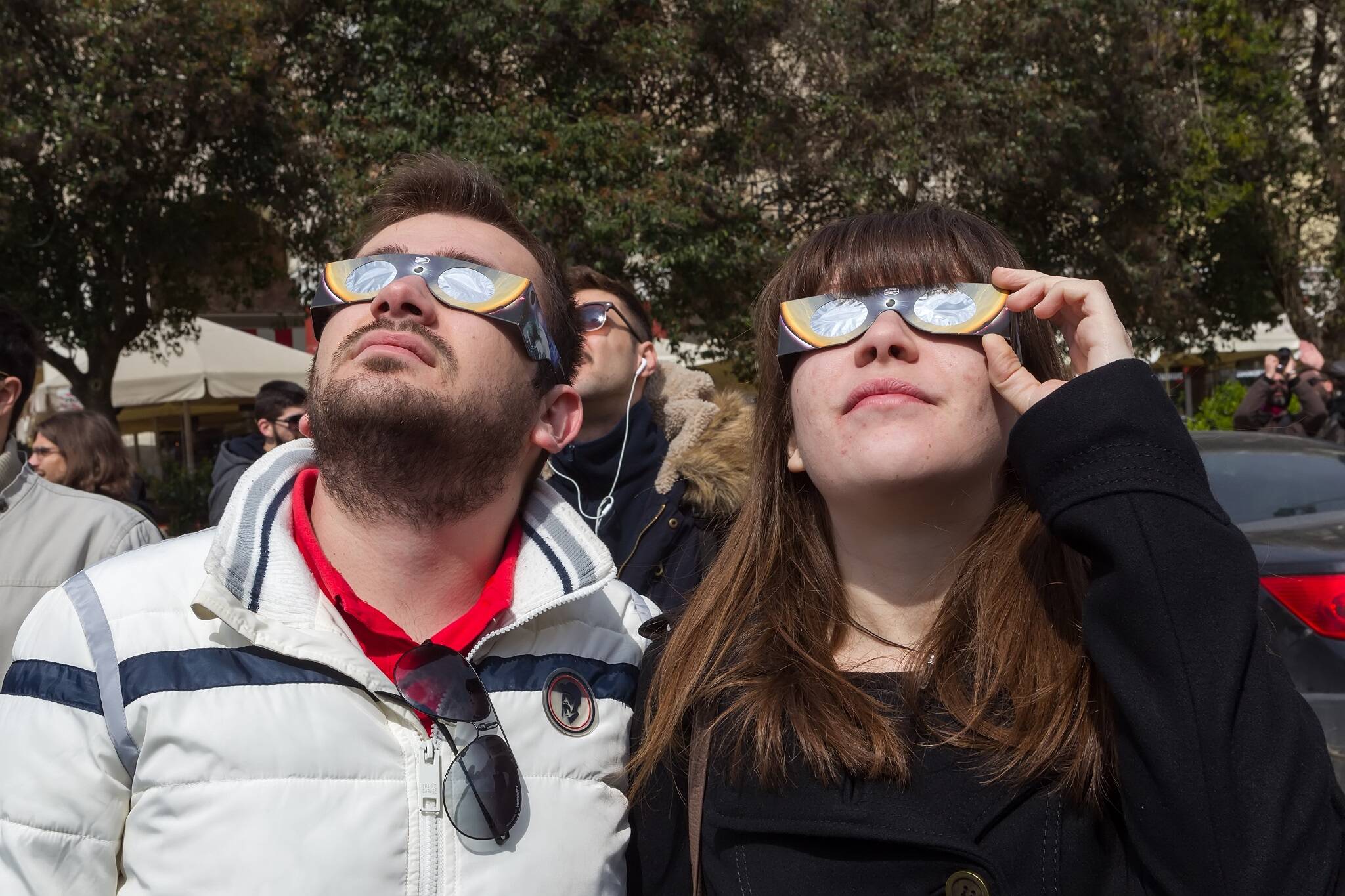
Here's a down-to-the-minute breakdown of how the rare eclipse will happen in Toronto
Just a few days remain before Toronto gets to experience a rare solar eclipse that will bring a near-total blackout of the sun in the middle of an afternoon on April 8, 2024.
Toronto will lie just outside of the eclipse's path of totality, and while the city won't have quite the impressive view as the total blackout expected for locales like Niagara Falls, the skies above Canada's largest city will darken between 2:04 p.m. and 4:31 p.m. next Monday, with the peak occurring at 3:19 p.m.
It's sure to become one of the largest coordinated coffee breaks in the city's history, and you'll want to scout out a good spot and catch every second of this once-in-a-lifetime phenomenon.
Detailed data pulled from Time and Date offers a great breakdown of the upcoming eclipse's highlights, and you can consider this your official guide to make sure you don't miss a minute of the action when the eclipse arrives over Toronto.
First contact: 2:04:58 p.m.
The eclipse will officially begin for Toronto just before 2:05 p.m.. If clear skies allow it, this will be the moment that the outer edge of the moon begins to encroach on the sun's path.
Visibility: 2:06 p.m.
This initial phase will look like business as usual for most sky-watchers, however, those viewing the phenomenon with magnified lenses like telescopes or telephoto lenses will easily spot a slight crescent shape. Others wearing eclipse glasses may start to notice a notch carved from the sun at this point in the spectacle.
Skies begin to darken: 2:27 p.m.
Just over 20 minutes into the eclipse, roughly 20 per cent, or one-fifth of the sun will be covered by the moon, and it should start to look just a bit darker outside — even if clouds are a factor.
Starting to feel colder: 2:34 p.m.
Just like a sunset brings about a drop in temperatures, the moon blocking out the sun's rays will be felt by people on the ground. Decreasing solar energy during the eclipse will translate to a temporary dip in temps that will be apparent within the first 30 minutes of the event.
Take note of the shadows: 2:41 p.m.
Solar eclipses have some interesting effects on shadows. Those who experienced the partial eclipse in 2017 will remember crescent-shaped shadows cast by the partially obscured Sun.
The impact on shadows will be even more pronounced this time around, and shadow edges aligned with the sun's temporary crescent shape will appear sharper.
It's getting darker: 2:49 p.m.
Most people will notice darkening skies by the eclipse's 45-minute mark, but the sky will only grow darker in the 30 minutes to follow.
Changing weather: 2:56 p.m.
Decreasing solar energy as the eclipse approaches its peak will translate to changes in temperature, humidity and even wind.
Fading light and colours: 3:03 p.m.
With just over 15 minutes to go until the eclipse reaches its peak, viewers will notice diminishing light and colour as the sun's visible rays are reduced to a slender crescent.
Animals are officially freaked out: 3:11 p.m.
Most of us humans have been briefed on the upcoming solar phenomenon, but pets and wildlife will likely be at least a bit freaked out by the sun's sudden disappearance. At this point in the eclipse, with just a sliver of light reaching Toronto, you can expect the birds to quiet their springtime chirping and nervous reactions from family pets.
Peak conditions: 3:19:56 p.m.
The peak of the eclipse will arrive just before 3:20 p.m., and this is the moment you don't want to miss. At this stage, 99 per cent of the sun's rays will be blocked out by the moon, with skies appearing close to late dusk.
The Sun returns: 3:28 p.m.
The eclipse's peak will conclude as the moon passes the sun, starting with a small sliver of light similar to the conditions immediately before the peak.
Weather is returning to normal: 3:43 p.m.
Temperatures are rising and the animals have stopped freaking out. Though the big moment has passed, there are still amazing viewing opportunities for the final stages of the eclipse.
Back to 20 per cent coverage: 4:11 p.m.
This stage will essentially be a repeat of the conditions experienced roughly one hour and 45 minutes earlier.
Return to normal: 4:31:41 p.m.
The eclipse will officially end just before 4:32 p.m., giving 9-5 workers a brief period of productivity after what will likely be a day of mesmerized work interruptions.
Ververidis Vasilis/Shutterstock
Latest Videos
Latest Videos
Join the conversation Load comments







